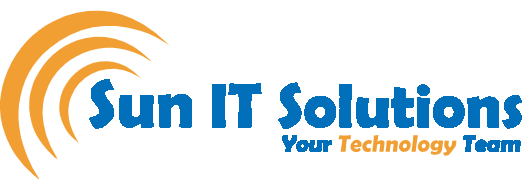An IT strategy is essentially a comprehensive set of documents that encompasses the industry’s vision and tactical planning for computer technology. This included financial planning, strategic planning documents, and operating models for the company’s technology architecture in the future. You must ensure that representatives from all departments participate in the planning process, which should ideally be led by your Chief Information Officer (CIO) or outsourced to a virtual CIO (vCIO).
Developing an IT Strategy
Developing an IT strategy is one of the most beneficial things your company can do. When properly set up, information can be kept safe and all work can be completed efficiently. It included detailed information and documentation that covers a wide range of topics, including your company’s vision and any information technology strategic planning.
A smart strategy must include documents such as strategy documents, operational models, and budgeting. It will aid in the unification of all business processes and enable a much more comprehensive strategy for all necessary cybersecurity assessment methods. It can even contribute to enhancing IT resilience to reduce downtime. It is essentially the structure that will support the implementation of any technical solution for your industry.
Strategies Of A Good IT Strategies
- Aligning with Organizational Goals
This may elicit a few groans, but everyone needs to get on the same page. Simply put…. consider writing it down to make sure it is sent to everyone associated. A documented innovation strategy provides a clear picture that aids in the acquisition, allocation and management of IT resources to assist in informing and fulfilling the organization’s objectives. If all business units do not share the same strategic goal(s), the results could be disastrous and costly.
- Information Gathering Procedure
It is critical to actively engage in the development of an IT strategic plan. You have to set something that can support your immediate requirements while also scaling for growth prospects. To do so, you must first understand key industry technology trends. You should also take into account the different tools that you can use for your particular sector and niche. The IT department has the responsibility of supporting and deploying any tools or software used in daily business operations. Many technology-based tools are underutilized or misused in the absence of IT support.
Whereas key stakeholders may provide initial guidance for the overall planning, employees on the ground will assist in guiding this procedure. You have several options for conducting the data process. Individual discussions and group interviews can provide you with information about what your customer wants to be done. You can work on these goals by attending meetings to discuss technological solutions to various problems and needs.
- Define Needs And Scope
The very next stage is to identify your IT plan’s requirements and timelines and to make sure that it addresses the goals of each business segment as well as the corporation overall.
Whereas this approach is based on long-term points of view and objectives, key phrases and timetables can be incorporated into benchmark tests and analyzed and checked regularly to ensure their effectiveness and relevance. Going to consult IT professionals to assist in incorporating those key phrases and determining IT plans for various tech companies so that they can maximize their efficiency.
- Set The KPIs
“What gets measured gets done,” as the saying goes. To ensure that your IT strategy is leading your company in the right direction, create a set of KPIs (key performance indicators) to track its success. There are different key metrics due to the nature and concentration of each component. For example, measuring agility, project delivery time, customer and employee satisfaction, marketing and sales ROI, capacity utilization, service-level indicators (for example, the amount of help desk calls), and so on.
- Audit Current Capabilities and InfraStructure
Don’t embark on a new IT strategy before even assessing the existing infrastructure. This would include all of the information center’s hardware. Examine what is available, your existing capabilities, and any gaping holes that need to be filled.
Take into account how employees use modern techniques and which obstacles each department may face. You can work to develop the strategy you require, whether you build on top of the existing system or start from scratch. It was also necessary to test to obtain a good set of metrics about the performance of your IT network and its linked support system. You could narrow your search to specific items involving a single implementation or tool. When dealing with a limited sample group, changes can be easily monitored.
- Define Architecture
Now since you know where users are and where you need to go, it’s essential to sort out where to go by mapping out the IT architecture, which includes software, hardware, as well as other tools and information. The overall architecture should take into account department-specific technologies (for example, to ensure regulatory compliance) and how they integrate into the relatively large company-wide structure.
- Identify Right Resources
Whereas most businesses have such an IT team, it is typically responsible for the daily operation of the IT processes. Whenever the team is tasked with extra IT projects and long-term innovation decisions such as digital transformation, resources are commonly extended. It’s critical to go over your project management plan with an IT-managed service provider to ensure you have enough people with the right skills to endorse both new IT measures and the operational phase. This will provide you with the as a whole competitive edge you require!
Your IT team is a precious asset that possesses the knowledge base required to lead your IT strategy. Even so, at the critical stages of planning and building such a strategy, your team will require additional support from consultancy services, either on fine-tuning your IT strategic plan or off-loading day-to-day processes so they can focus on increasing goals and initiatives.
Visit our IT consulting page to learn how Sun IT Solutions can provide the technical advice you require to assist the management of your business!




